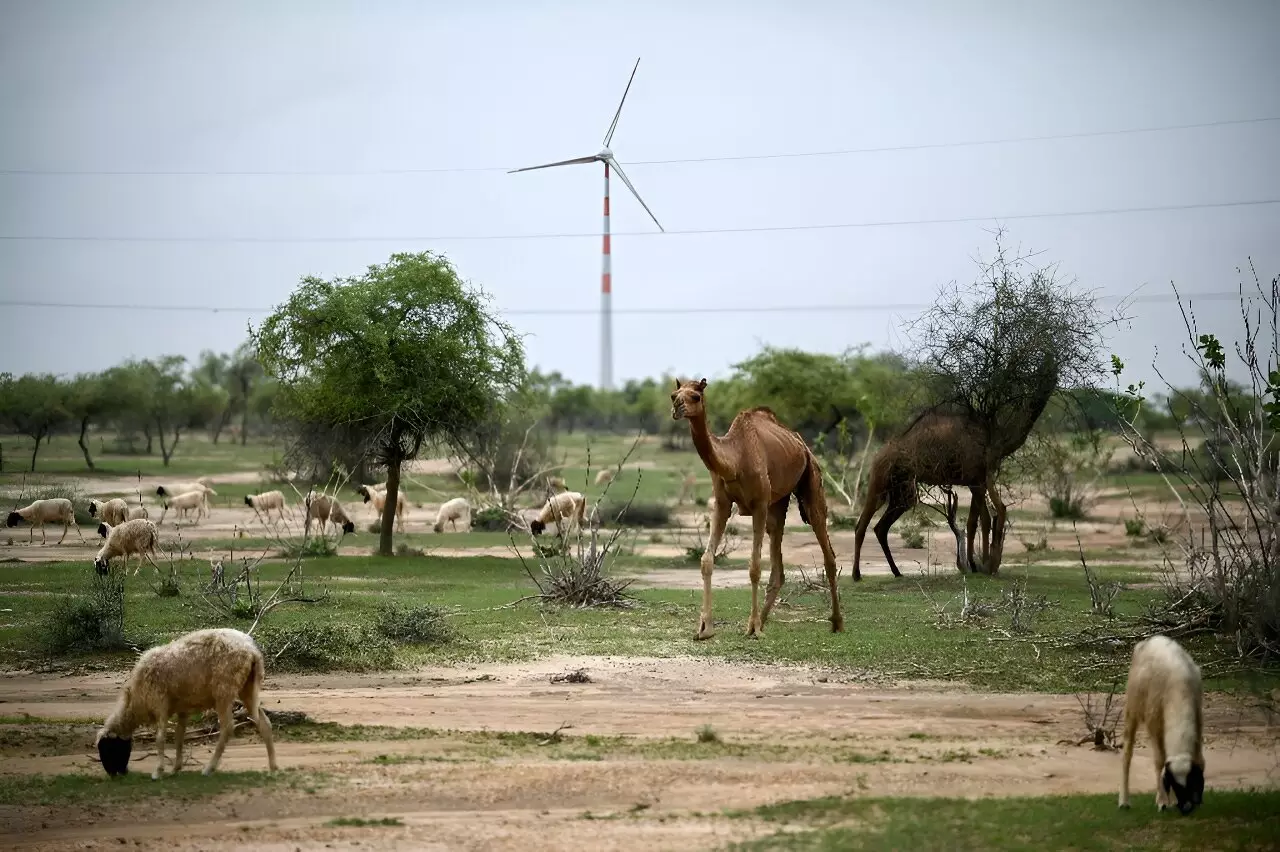India’s push for green energy in the Thar desert has led to the rapid expansion of wind farms, providing critical renewable energy for the country. However, the residents living in the shadows of these wind turbines have a different story to tell. For many like 65-year-old livestock herder Nena Ram, the arrival of these giant turbines has disrupted their traditional way of life. The turbines have encroached on grazing lands and damaged sacred groves, affecting the livelihoods of communities dependent on livestock-based economies.
Farmers like Ram are on the frontlines of climate change impacts, facing the brunt of both environmental degradation and mitigation efforts to combat it. While they may not be the major contributors to greenhouse gas emissions like heavy industrial centers, they are the ones bearing the consequences. The loss of grazing lands and reduced water sources due to wind farm construction have further exacerbated their struggles, making it difficult to sustain their way of life.
Indian conglomerates like the Adani Group and Suzlon own many of the wind turbines in the Thar desert, claiming to support the country’s renewable energy transition. However, local farmers argue that these turbines have been built on community grazing lands, causing a decline in milk production and impacting livelihoods. Despite promises of supporting communities with health, education, and livestock projects, the reality for many farmers is far from idyllic.
While the wind turbines generate electricity for the grid, the residents of Jaisalmer district still face frequent power cuts, sometimes lasting for days. Power is often diverted to industrial centers and big cities, leaving rural communities in darkness. The scorching temperatures of the desert, reaching up to 50 degrees Celsius, make power cuts unbearable during summer, pushing residents to desperate conditions.
The expansion of renewable energy plants in the Thar desert has had unintended consequences on the environment, leading to biodiversity loss and threats to local species. The critically endangered Great Indian Bustard, once a common sight in the area, faces extinction due to collisions with overhead power lines. Environmental activists stress the importance of preserving these biodiverse areas, warning of the irreversible damage caused by rapid industrialization.
India’s ambitious targets for renewable energy are commendable in the fight against climate change, but the cost to local communities and the environment cannot be ignored. Balancing the need for clean energy with the protection of livelihoods and biodiversity remains a challenge in the transition to a sustainable future. As the country continues its journey towards a net-zero emissions economy, it is crucial to address the concerns of those directly impacted by the rapid expansion of green energy projects. Only through a holistic approach that considers both environmental and social factors can India achieve a truly sustainable and equitable energy transition.


Leave a Reply